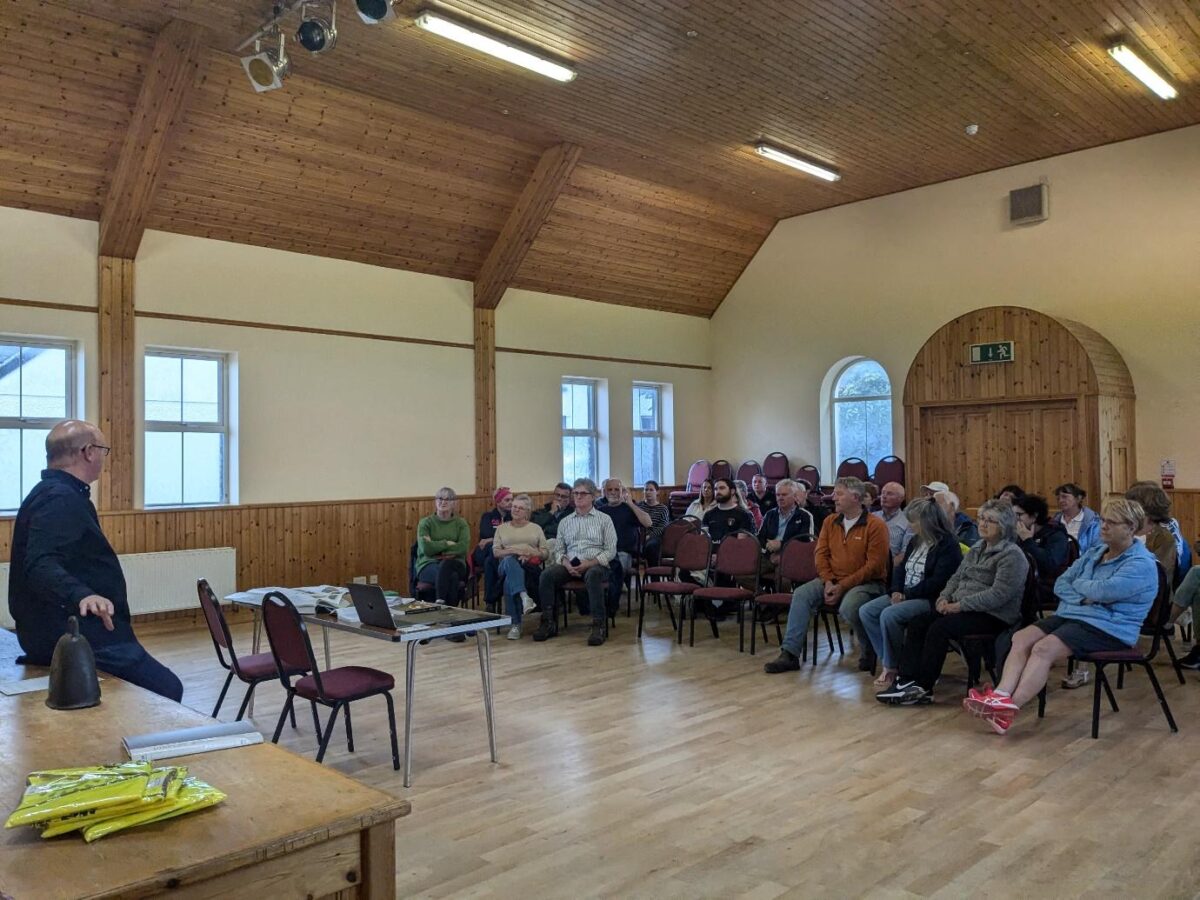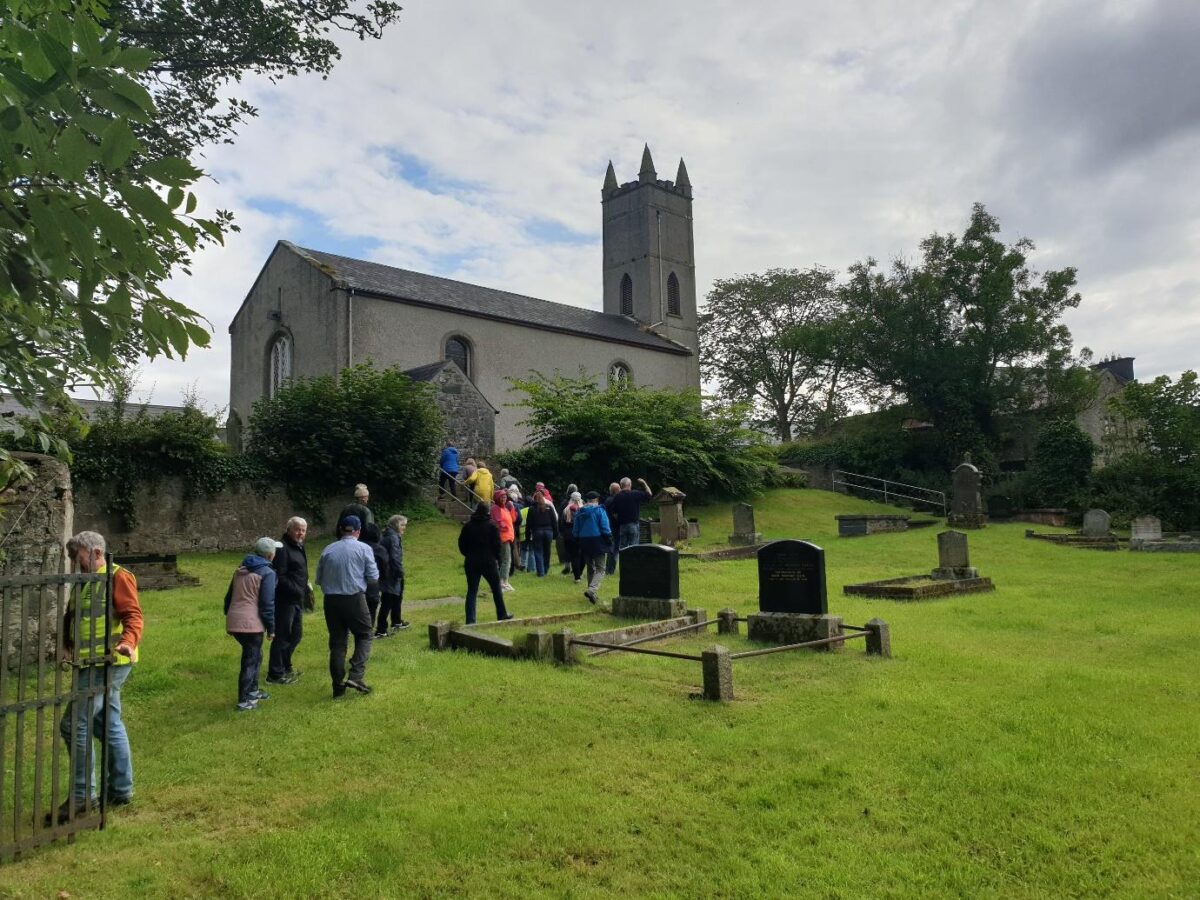A captivating journey through time unfolded in Culdaff this week as locals and visitors gathered to learn about the village’s patron saint.
22nd July, the feast day of St. Buadàn, was aptly chosen by Culdaff Development Association and Tidy Towns as a day to invite interested public to find out more about the cult of Culdaff’s patron saint, and to explore the history of the village and area, hidden in plain sight.
Led by local historian and member of Culdaff and Cloncha Heritage Group, Neil McGrory, the audience of over 30 locals and visitors were treated to a rich explanation and exploration of the early medieval history of Culdaff. An important artefact and tangible evidence of the village as a monastic site is the bell of St. Buadàn. A copper hand-bell which is estimated to be from the 7th or 8th century and which, remarkably has not left the parish of Culdaff in 1300 years. One of nearly a hundred hand bells that have been preserved in Ireland, the bell of St. Buadàn is a significant relic in the stories of the Early Irish saint and has played a role in the feast day and cult of St. Buadàn throughout the years.

Local historian Neil McGrory providing detail about the origins of 8th Century St. Buadàn’s Bell.
The talk in the Wee Hall, led to a small Turas or pilgrimage, around sites of interest in the village. The first, Ardmore Graveyard, which is significant as a possible site of an early Christian church founded by St. Buadàn, and part of a site linked to the Church of Ireland church. Then Neil took the group to the Culdaff River to the site of the steps and holy well. Although high tide covered the rock known as St. Buadàn’s boat the role of the river, as a key transport route to Scotland, and as part of the sacred monastic complex was explored.
The last site, of the Turas, was the Church of Ireland church. Beside the river, its location suggests that it has been the site of religious importance prior to the establishment of the current building. The chairperson of the Culdaff Development Association, George Mills, provided background to the dedications on the walls of the church bringing the group into the more recent past of the village.

Leading the St. Buadàn’s Feast Day event to the Church of Ireland church in Culdaff Village.
The event was made possible through the Culture & Creativity Project Scheme Award 2024 awarded to the Culdaff Development Association by the Donegal County Council and Creative Ireland. The success of the St. Buadàn’s Feast Day event has encouraged the local organisers to plan further events for August and September. Neil McGrory, from Culdaff and Cloncha Heritage Group commented “The inaugural Turas Buadàn event will hopefully reawaken interest in Culdaff’s monastic heritage and help us toward securing support for the restoration of the ancient stone steps and the Holy Well at Culdaff River.”
He added, “the large turnout and community interest underpins the local engagement and appreciation
of our unique heritage dating back to the sixth century. The restoration process could provide an important new location to add to the heritage sites of Inishowen.”






